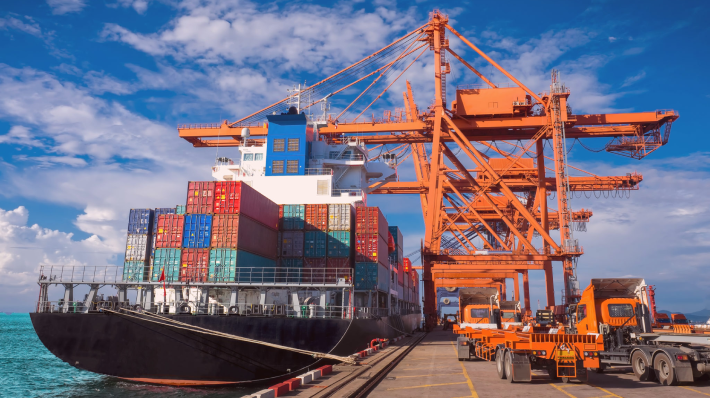When transporting goods between countries, and sometimes even between cities, it may be necessary to change transport: reload the delivered products from cars to railway carriages or sea containers. Thus, the transshipment of goods - a change of vehicle - is carried out. This technological process is also called repacking.
Types of cargo
Transshipment can be performed for the following types of cargo:
• Loose cargo (grain, sand, fertilizers).
• Liquid draft products (oil, oils, alcohols, gas and other liquids).
• Products with sizes larger than specified by the standards (oversize).
• Goods packed in bags, boxes, crates (in bulk).
• Products placed on pallets.
• Varieties of suppliers' property transported in containers.
The method of cargo transshipment is chosen from the standpoint of the benefits of the enterprise - the customer of the service.
Basic Process Types
There are two types of cargo transshipment: directly from one transport to another or with the placement of cargo in a warehouse.
The direct type of repacking occurs by unloading goods and simultaneously loading from a truck into a railway container or other mode of transport. In this case, financial and time costs are saved.
In what cases is a temporary storage warehouse used?
• When it is necessary to consolidate one batch of goods from several components.
• If you need to divide the total batch into several.
• Temporary storage in a warehouse may be necessary for customs clearance.
• There was a need for warehousing services for transshipment of goods (replace packaging, weigh, mark goods, check statements).
Temporary storage of goods is an economical and convenient solution in many cases.
Where does transshipment take place
Points of transshipment of goods from one type of transport to another are among the main elements of transport systems of any level.
Depending on the type and conditions of transportation, the type of products, the transport used and other factors, repacking can be carried out in the following places:
• Sea port.
• Railway terminals.
• Transshipment special sites (terminals), often located near large cities and highways.
• A transshipment warehouse used for bulk goods, containers, pallets, bulky goods, volumes.
Ports, railway terminals are used for any products, including liquids, gas, bulk materials.
When transshipping cargoes of various modes of transport, the following operations can be performed:
• transportation;
• cargo acceptance;
• safety check;
• verification of accompanying documentation;
• determination of the weight of the cargo according to the documents;
• unloading;
• transfer to the warehouse;
• paperwork.
Transshipment stages
If international deliveries of goods are carried out, then, in addition to unloading and loading, they draw up customs documents. Repacking consists of the main stages:
1. The goods are unloaded from the arriving vehicles.
2. Employees carry out warehouse operations, if necessary, the goods are placed in warehouses for temporary storage.
3. The goods are loaded for subsequent delivery to the destination.
All actions take place in accordance with the terms of the concluded contracts, the necessary documents are drawn up.
Transshipment from Kronex Company
LLC Kronex Company performs transshipment of various types of cargo according to the following schemes:
• transshipment of cars - cars;
• transshipment of a car - wagon;
• wagon-wagon transshipment.
We offer 2 types of cross-docking:
• One-stage - direct transfer of cargo in one stage, without re-formation of consignments.• Two-stage - the shipped consignment of goods is reissued and divided into groups.
The work is performed by qualified specialists of the company both manually and with the help of modern specialized equipment. The terminal allows passing a large traffic flow (150 vehicles, railway transshipment of 45 wagons per month). Employees of the company draw up accompanying acts, transfer sheets, certificates, promptly provide information on the movement of cargo.









Comments